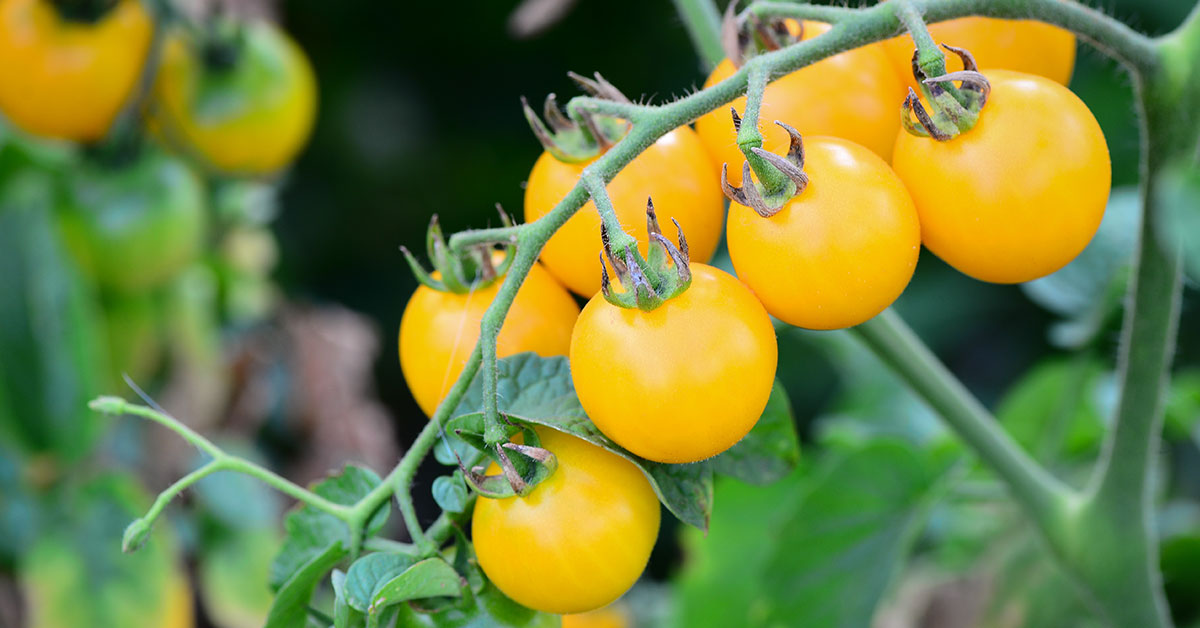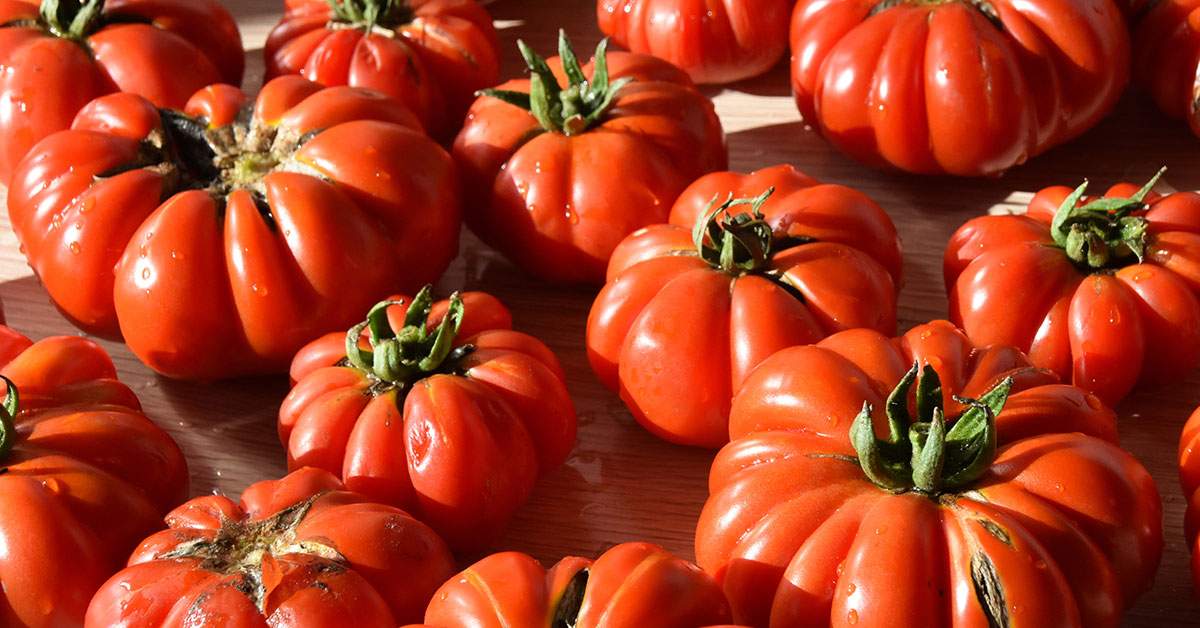When it comes to tomatoes, the Italian Ice tomato is a unique and flavorful variety that has been gaining popularity among foodies and gardeners alike. This tomato variety is known for its sweet, citrusy taste and its beautiful, creamy-white color. In this blog post, we’ll take a closer look at the Italian Ice tomato, its characteristics, and how to grow and use it in various recipes. So, if you’re interested in adding a new and exciting tomato variety to your garden or kitchen, keep reading!
What is an Italian Ice tomato?
The Italian Ice tomato is a type of tomato that is gaining popularity among gardeners and food enthusiasts. It is a small, round tomato that is known for its sweet and tangy flavor. The tomato gets its name from its frosty-white, almost translucent skin which resembles a frozen Italian dessert – the Italian Ice.
The Italian Ice tomato belongs to the cherry tomato family and is a hybrid variety that was developed by the famous seed company, Burpee. It is a determinate variety, meaning that it grows to a specific height and then stops growing. The tomato plant typically grows to about 3-4 feet tall and produces an abundant yield of small, 1-2 inch in diameter fruit.
The unique flavor profile of the Italian Ice tomato makes it a popular choice for salads, salsas, and other dishes that require a sweet and tangy tomato flavor. It is also a great addition to cocktails and mocktails, as its flavor pairs well with many spirits.
Overall, the Italian Ice tomato is a delicious and versatile tomato variety that is worth trying out for any food lover or home gardener. So, if you are looking for a unique and tasty tomato variety to grow in your garden or add to your recipes, the Italian Ice tomato is definitely worth considering.
How to start Italian Ice tomato seeds
Starting tomatoes from seed is a cost-effective and rewarding way to grow your own tomato plants. To begin, choose the tomato varieties that suit your preferences and growing conditions.
Fill seed trays or pots with a lightweight and well-draining seed starting mix, plant the seeds at the recommended depth, and provide adequate moisture and warmth for germination.
Once the seedlings have developed their second set of true leaves, they can be transplanted into larger containers or individual pots. Gradually acclimate the seedlings to outdoor conditions before transplanting them into the garden.
By following these basic steps, you can successfully start tomatoes from seed and enjoy a thriving crop of homegrown tomatoes.
Additional Resource: Our comprehensive guide to starting tomatoes from seed
Growing & care
Transplanting and caring for tomatoes outdoors involves a few essential steps. First, choose a sunny location with well-drained soil. Prior to transplanting, harden off the seedlings by gradually exposing them to outdoor conditions.
Dig a hole slightly larger than the root ball of each seedling and plant them, burying the stem up to the first set of leaves. Water the seedlings thoroughly after transplanting. Provide consistent watering, aiming for 1-2 inches of water per week.
Stake or cage the plants for support and prune indeterminate varieties by removing suckers. Monitor for pests and diseases, taking prompt action if necessary. By following these steps, you’ll set your tomato plants up for healthy growth and a fruitful harvest.
Additional Resource: How to transplant and care for tomatoes outdoors
Common tomato pests and diseases
Tomatoes are susceptible to various pests and diseases that can affect their health and productivity. Some common tomato pests include aphids, tomato hornworms, whiteflies, and cutworms. These pests can cause damage to leaves, stems, and fruit, leading to reduced plant vigor and yield.
Additionally, tomato plants can be affected by diseases such as early blight, late blight, fusarium wilt, and verticillium wilt. These diseases can cause leaf discoloration, wilting, and fruit rot. Proper identification and timely intervention are crucial to effectively manage these pests and diseases and ensure the successful growth of tomato plants.
Additional Resource: Comprehensive list of tomato diseases and pests and how to fix them
Common problems
If you’re planning to grow Italian Ice tomato in your garden, you might face some common problems. This variety of tomato is known for its sweet and tangy flavor, but it’s also quite delicate and susceptible to certain diseases and pests. Here are some common problems you might encounter when growing Italian Ice tomato:
- Blossom End Rot: This is a common problem in many tomato varieties, including Italian Ice. Blossom end rot is caused by a calcium deficiency in the soil, which results in blackened, mushy spots at the bottom of the fruit. To prevent this, make sure your soil is rich in calcium and keep the plant well-watered.
- Fusarium Wilt: This disease is caused by a fungus that attacks the plant’s vascular system, making it difficult for water and nutrients to reach the fruit. The first sign of fusarium wilt is yellowing and wilting of the leaves. To prevent this, avoid planting Italian Ice tomato in soil where other tomatoes have been grown and make sure the soil is well-drained.
- Tomato Hornworms: These large, green caterpillars can eat through the leaves and fruit of your Italian Ice tomato plant. To prevent this, inspect your plants regularly and remove any caterpillars you find by hand. You can also use organic pesticides to keep them at bay.
- Early Blight: This fungal disease causes yellowing and spotting on the leaves of your plant. It can also cause the fruit to rot prematurely. To prevent this, make sure the plant is well-ventilated and avoid overhead watering.
- Aphids: These tiny insects can suck the sap from your Italian Ice tomato plant, causing it to wilt and die. To prevent this, spray your plants with a mixture of water and dish soap or use organic pesticides.
In conclusion, growing Italian Ice tomato can be a rewarding experience, but it’s important to be aware of the potential problems you might encounter. By following these tips, you can help your plants thrive and enjoy a bountiful harvest of delicious, sweet, and tangy tomatoes.
Uses for Italian Ice tomato
Italian Ice tomatoes are a popular variety of tomato that are known for their unique flavor and texture. These tomatoes are typically used in a variety of culinary contexts, and they are prized for their sweet, rich flavor that is perfectly balanced by a slightly tangy acidity.
One of the most common uses for Italian Ice tomatoes is in fresh salads. These tomatoes are perfect for use in salads because they have a firm, meaty texture that holds up well when sliced or diced. They also have a bright, vibrant color that adds a beautiful pop of color to any salad.
Another popular use for Italian Ice tomatoes is in sauces and marinades. These tomatoes have a rich, complex flavor that makes them the perfect base for any type of sauce or marinade. They are particularly well-suited for use in Italian-style sauces, where their sweet, tangy flavor pairs perfectly with other classic Italian ingredients like garlic, basil, and oregano.
Finally, Italian Ice tomatoes are also commonly used in sandwiches and wraps. Their firm texture and sweet flavor make them a great addition to any sandwich or wrap, and they pair particularly well with hearty, savory ingredients like grilled chicken or roasted vegetables.
Overall, Italian Ice tomatoes are an incredibly versatile ingredient that can be used in a wide variety of culinary contexts. Whether you are looking to add a pop of color to a fresh salad, create a rich and flavorful sauce, or add some sweetness to a savory sandwich, Italian Ice tomatoes are sure to impress.













